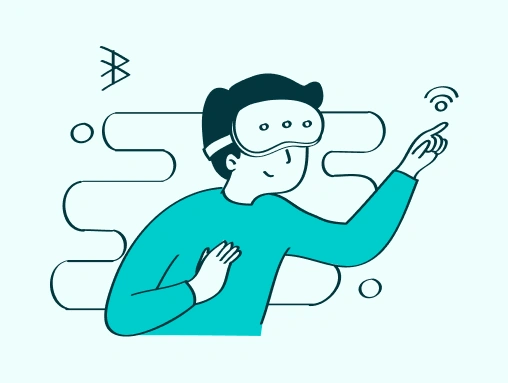Table Of Content
- Why Website Speed Matters for SEO
- Google’s Core Web Vitals and Page Speed
- Impact of Slow Websites on User Experience (UX)
- How Fast Page Load Time Increases Conversion Rates
- Tips for Improving Website Speed and Performance
- Tools to Measure and Optimize Website Speed
- What is an Ideal Page Load Time?
- Conclusion
- FAQs
As the availability of the internet and broadband connection has become commonplace, page load time is a critical factor in current web designing. Website speed has phenomenal impacts on usage experience and additionally on website positioning on a visit like Google. This results in a high bounce rate and poor search engine rankings since a slow rate of page loading is a put-off to users. On the other hand, fast speed loading increases user experience, increases customer retention rates, and thus, increases conversion.
In this article, we will define the relationship between website speed, SEO ranking factors, and user experience(UX). In the article, you can understand how slow websites affect users and Google’s Core Web Vitals give some helpful methods to improve the website’s speed.
Why Website Speed Matters for SEO
Website speed has been one of the major ranking factors in SEO in the last few years. Every search engine, most especially Google, tends to favor websites that are fast-loading because of the improved user experience that comes with such sites. This can tell the search engines that your content does not meet the expectations of the users hence your website will be ranked low on the SERPs.
If your website is slow, that means users are likely to leave the website, thus high bounce rates will occur. These bounce rates inform search engines that your users are not finding value on your site, which pulls rankings down.
Besides bounce rates, the site speed also determines your crawl budget that is the number of pages Google bots crawl and index within a given time. If your website is slow then these bots take time to crawl each page and as such there is a possibility that some sections of your website are not accessed by these bots. This results in lower visibility of the website on SERPs and resulting decrease in traffic to the site.
A fast website on the other hand is favorable to the overall SEO performance of the site. First, fast-loading websites retain users, these users visit other pages of your website and participate in the content. These keep the viewers a little more engaged and lead to improved SEO effectiveness.
Google’s Core Web Vitals and Page Speed
Google launched Core Web Vitals in May 2020 to provide guidelines for the assessment of the quality of experiences users are provided on the website they access. These metrics specifically focus on three critical aspects: loading performance, interactivity, and visual stability. Since these have quickly become some of the most important SEO ranking factors, they have a huge impact on how your site functions in the eyes of Google.
Here’s a closer look at the three main Core Web Vitals:
1. Largest Contentful Paint (LCP) – This is about loading time where the Largest element which is visible given a certain size and scrolling position of a Web page is fully rendered. The LCP score is calculated and an LCP score under 2 is desirable. A fast LCP helps improve the initial experience of users and enables them to view the main content of the page they are open.
2. First Input Delay (FID) – FID looks at how long it takes for the webpage to start responding to the user input, for instance click or a tap. This is so because, for an ideal positive user experience, the FID score is preferred to be below 100 milliseconds. This is especially important for the first time because an optimal response time invites users to be more interactive with your material.
3. Content Load Time (CLT) – CLS measures the extent to which layout shifts when a page is being loaded. When objects such as images, or texts, shift their position during the loading process, this is an inconvenience to the users. It is recommended that to get an ideal score in CLS, one should have a score of less than 0. 1, meaning that the configuration of the components does not change significantly affecting their positioning, and hence stability of layout dominance.
These three make up the Core Web Vitals and are very closely related to page load time and website speed. This is important since if one’s website is slow in loading, or not ‘responsive’ during, for example, a click event, it will be deserted immediately. This behavior informs Google that the site is giving a poor user interface and this lowers your SEO rankings.
Adhering to these elements of Core Web Vitals not only helps you rank better but also makes a huge difference to your website’s UX. If these metrics are embraced, then one is able to establish a high-octane site that maintains users’ attention and thus increases conversion rates and the general website's performance.
Impact of Slow Websites on User Experience (UX)
User experience also referred to as UX is one essential component that defines the success or failure of your website. Again, slow-loading sites are a disadvantage to user experience(UX) since the users will not be pleased, will not engage in the site, or leave within the shortest time possible. Here are some of the most significant effects that slow websites have on user
experience(UX):
1. Increased Bounce Rates
According to research, should a page have taken more than 3 seconds to load then the tendency is that users will abandon the page. Every second of latency increases bounce rates tremendously. This means a high bounce rate sends a negative signal to all the search engines that users do not gain anything from visiting your site, this can greatly affect your SEO rankings and user experience.
2. Lower Engagement
Slow loading of web pages leaves the user with no motivation to extend his or her visit to the web page any further. Hence, the primary engagement values, including pages per session, time spent on the site, and interactions are negatively affected. These are signals that search engines keep track of so as to tell whether the users are benefiting from your content. Less interaction has been observed to have a negative impact on the site’s ranking by search engines.
3. Frustrated Users
Not only does suboptimal speed hurt engagement, but a slow loading website also affects how your visitors perceive your brand. The negative effects of frustrated visitors are that they won't revisit the site, they may write negative comments and don’t even recommend the site. This affects the credibility and sales of your brand and the overall traffic in the long run.
4. Mobile User Experience
A scaled-down smartphone is used by billions around the world making it a major part of Internet traffic. But mobile users are often slower than the desktop users in terms of internet speeds and hence website speed is of even greater importance on mobile interface. Long loading times on mobile sites result in high bounce rates mainly due to poor network speeds in some parts of the world.
How Fast Page Load Time Increases Conversion Rates
Although visitors and user experience are strong arguments for a fast page load time, it is important to stress how such a characteristic helps to increase conversion rates. No matter what your objective is, whether you are looking forward to selling more products, getting more subscriptions, or even selling leads, a fast-loading site is of added advantage. Here’s how:
1. Higher Trust Levels
It is now a fact that users tend to believe in websites that load up very fast. When a website is effective it becomes more credible and therefore people view it as professional. This builds confidence in the user which in turn makes him or her willing to complete an action, whether it is to make a sale or complete a contact form.
2. Enhanced User Flow
Facilitating the switching from one screen to another the users can find specific information they need or certain things they would like to do. If you are able to guide the users and show them around your website, then they will be able to perform an action you desire. The usability and convenience will give your website preference.
3. Better Performance Across Devices
The quicker the visitors get to the information they are looking for, the better the result is with the fast page loading time for both PC and mobile or tablet visitors. Making your website responsive on all platforms helps increase conversions for the simple reason that users want quick and consistent performance irrespective of the device used to access the site.
Tips for Improving Website Speed and Performance
As has been discussed, enhancing the website speed involves the process of enhancing several factors that constitute your site. Below are some practical strategies for boosting website performance:
1. Optimize Images
Having high, uncompressed pictures on your website will significantly decrease the site’s speed. Optimise images for the web using, Tiny PNG, and Short Pixel to minimize the size of the image while keeping the quality intact. Further, the new formats such as WebP instead of the older formats such as PNG or JPEG can be helpful in increasing the loading time of the webpage.
2. Use Browser Caching
Browser caching is a feature that enables users to cache CSS files, JavaScript as well as images so that these files need not be loaded again each time a user visits a site. This helps to speed up the page loading for a person who has visited the site before and hence increases the user experience.
Caching means that a user can save the previous copy of a file and does not have to download a new copy of a resource each time it loads a webpage Minifying means that CSS, JavaScript, and HTML files are all made lighter by stripping off unnecessary character and whitespaces. This can be achieved by using utilities like CSSNano and Terser through which you can eliminate the unnecessary size and effectively work towards a faster website.
4. Utilize Content Delivery Networks (CDNs)
A Content Delivery Network (CDN) replicates your website’s files to multiple servers in different geographic locations, which means that the users from certain geographic locations will access another server that is nearest to them. CDNs decrease response time and increase efficiency for accessing content for the end-users specifically from the global users.
5. Enable Compression
By compressing files with Gzip or Brotli before it is sent to the browser, the overall size of the files is reduced and hence the website loads faster. This compression assists in cutting down the amount of data that is transmitted hence increasing the load time.
6. Reduce Redirects
Such a redirect creates a new HTTP request and thus increases the loading time of the page or the whole site. This is because by avoiding excess routing from one page to another, the access time is minimized thus improving on the times taken to open sites.
Tools to Measure and Optimize Website Speed
The velocity of a website plays a crucial role in affecting both user experience (UX) and SEO standings. A slow page load time can make your website unappealing to visitors, leading to lower conversion rates. If you want performance optimization for your website, you must monitor and improve its speed with efficient tools. Here are a few top choices to choose from.
1. PageSpeed by Google ( access performance of website and feedback)
Google PageSpeed gives you a comprehensive review of the content on your website and offers robust recommendations and feedback for your site's enhancement. It provides ratings for mobile and desktop versions of your website, pointing out areas for improving performance. Significant features consist of a performance score, suggestions for optimization (such as compressing images and caching browsers), and actual user experience data. This tool is highly beneficial for understanding the impact of your website's speed on SEO and UX.
2. GTmetrix (used for analyzing the performance of websites)
GTmetrix gives you a good recapitulation of both metrics like page speed by Google and YSlow measurements. It presents a thorough waterfall diagram illustrating the loading process of various site elements to pinpoint bottlenecks. By providing performance scores and tracking historical data, GTmetrix enables you to evaluate the impact of your optimization strategies over time, helping you comprehend your website's performance in relation to SEO ranking criteria.
3. Try Pingdom (website monitoring service)
Pingdom is a tool that is used for monitoring website performance, focal being uptime and speed. It evaluates your website using different worldwide locations, providing reports on loading times and assigning a performance grade depending on various measures. Pingdom assists in making informed decisions to improve your site's overall performance by providing an understanding of factors impacting user experience(UX).
What is an Ideal Page Load Time?
A fast page load time is typically under two seconds. Research has shown that sites that take less time to load have higher chances of attracting more users, better search engine credibility, and increased conversion rates. In the fast-paced digital world of today, users tend to abandon websites that load in more than three seconds, with around 40% of visitors doing so. This emphasizes the importance of increasing loading speeds to retain user interest and guarantee a positive user experience.
Every millisecond counts; even minor delays can negatively impact user experience and search engine optimization (SEO). Google considers the speed of web page as a factor in ranking, suggesting that faster websites are more likely to achieve better SEO rankings in search outcomes. A sluggish website can irritate and vex users and lead to lower search engine rankings, ultimately reducing traffic and user engagement over time.
Conclusion
The velocity of a website is one more factor that influences the site’s SEO ranking and user experience. This article is the result of my research on how slow-loading websites annoy users and negatively impact website popularity and search rankings. The importance of optimizing such a website can be observed in increased hits rate, better ranks in search engine results, and better conversion rate.
It becomes very important to ensure that issues like large image size, too many redirects, and bloated code are rectified to maintain the website's responsiveness across all devices. This form of upgrade to a website is likely to easily promote better search engine rankings, improve the overall look of the website as seen by the user as well as improve the overall website performance.
Whether the goal is trying to improve your website's ranks on the SERPs or simply ensuring that your users have a faster experience, the increased speed is overall helpful for everyone.
FAQs
1. Why is website speed important for SEO?
Website speed affects your SEO ranking because Google prioritizes fast-loading sites that offer better user experience and lower bounce rates.
2. What are Google’s Core Web Vitals?
Core Web Vitals include LCP (loading speed), FID (interactivity), and CLS (visual stability)—all key metrics Google uses to evaluate site performance.
3. How does slow website speed affect users?
Slow websites frustrate users, increase bounce rates, and reduce engagement—hurting both SEO and conversion rates.
4. What is a good page load time for SEO?
An ideal page load time is under 2 seconds. Anything beyond 3 seconds can lead to high user drop-off and lower search rankings.
5. What tools help improve website speed?
Tools like Google PageSpeed Insights, GTmetrix, and Pingdom help identify and fix speed issues for better performance and SEO.
The world’s First zero commission platform
Hire tech partners effortlessly
 If you're a non-tech founder looking for an agency or a tech founder looking for engineers.
If you're a non-tech founder looking for an agency or a tech founder looking for engineers. You can get your 5 best matches from 2800 in 5 mins, with 1000 data points tracked.
You can get your 5 best matches from 2800 in 5 mins, with 1000 data points tracked. Connect directly with no credit card needed!
Connect directly with no credit card needed!
You’re just a click away from the best talent.


